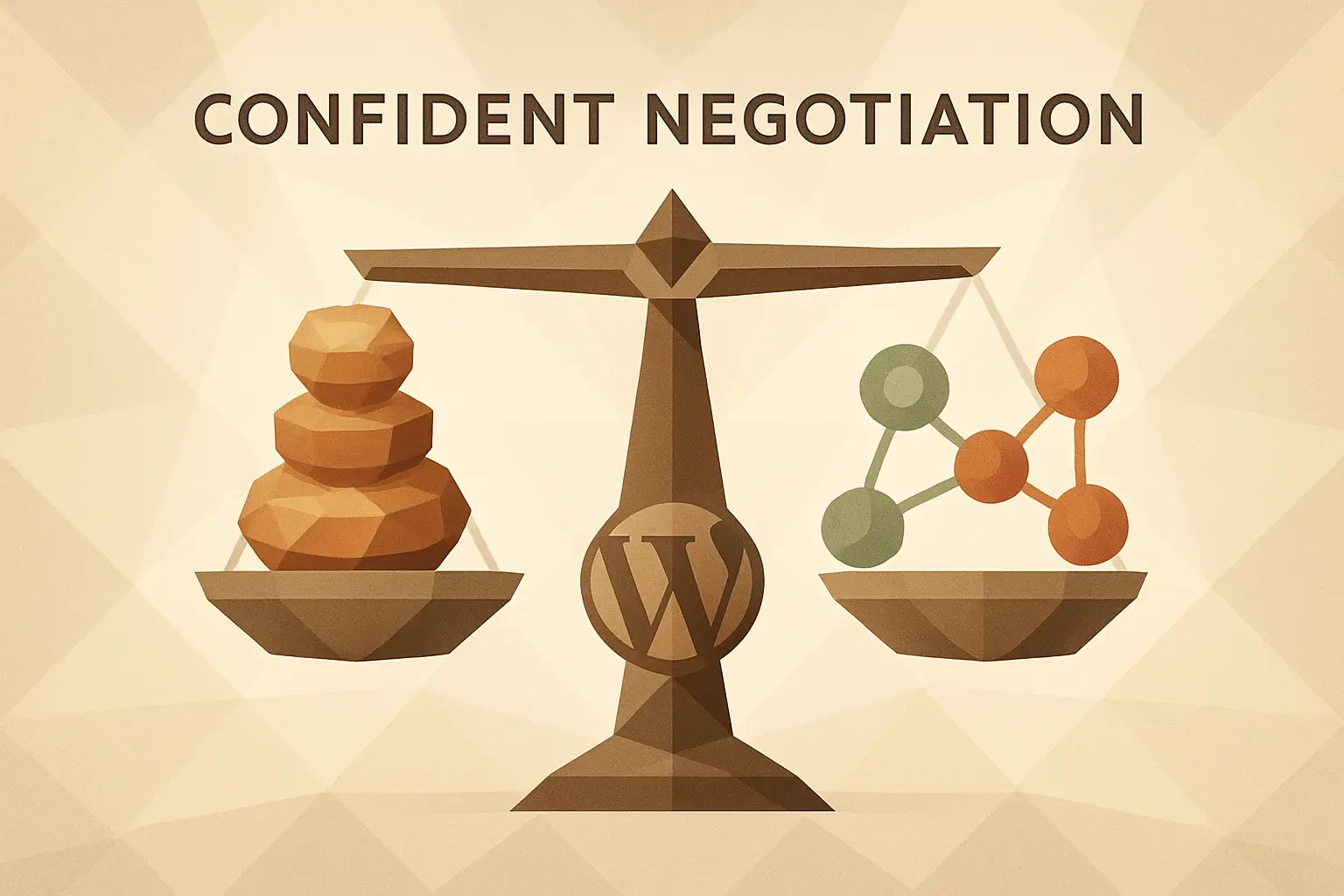Confident Negotiation: How WordPress Freelancers Can Secure Their Rates Without Losing Clients

Confident Negotiation: How WordPress Freelancers Can Secure Their Rates Without Losing Clients
The Mindset of a Master Negotiator
From 'Cost' to 'Investment': Reframing the Conversation
Projecting Confidence: Why Your Belief in Your Value Matters
Pre-Negotiation: Setting the Stage for Success
Researching Your Client and Their Needs
Preparing a Detailed Proposal That Screams 'Value'
Key Tactics for the Negotiation Conversation
The Anchor: Always Be the First to Name a Price
Responding to 'You're Too Expensive'
The Power of Silence
If You Must Concede, Trade, Don't Give
When to Walk Away
Identifying Red Flags of a Problem Client
How to Gracefully Decline a Project
Conclusion
References
Confident Negotiation: How WordPress Freelancers Can Secure Their Rates Without Losing Clients
The Mindset of a Master Negotiator
From 'Cost' to 'Investment': Reframing the Conversation
Projecting Confidence: Why Your Belief in Your Value Matters
Pre-Negotiation: Setting the Stage for Success
Researching Your Client and Their Needs
Preparing a Detailed Proposal That Screams 'Value'
Key Tactics for the Negotiation Conversation
The Anchor: Always Be the First to Name a Price
Responding to 'You're Too Expensive'
The Power of Silence
If You Must Concede, Trade, Don't Give
When to Walk Away
Identifying Red Flags of a Problem Client
How to Gracefully Decline a Project
Conclusion
References
Posted Jul 6, 2025
Struggling with price negotiations? Learn key strategies to confidently justify your value, handle objections, and win WordPress projects at the rates you deserve.







